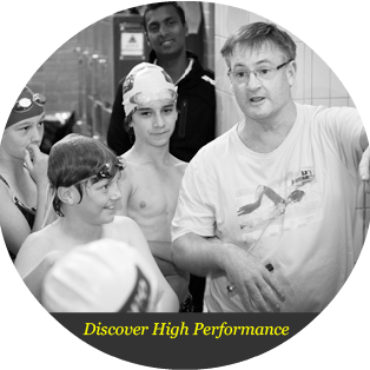For many years now I have been talking about, writing about, presenting workshops and teaching on the Performance Clock concept.
It has been and still is in my view the single most important concept in high performance sport or any field of endeavour for that matter.
Yet, for some reason, the majority of people still don’t get it.
Everyday, the newspapers, the television and the online news and sports services are loaded with stories about coaches, athletes and sporting teams who are failing due to their lack of understanding and acceptance of the Performance Clock, or more accurately, their failure to do anything about it.
Yet, by understanding this one simple concept, anyone who wants to be successful in sport has the single most valuable tool they will ever need in the palm of their hand (or at least on the screen of their laptop).
Let’s have another look at this most important of sporting principles, The Performance Clock and how it relates to effective coaching.
The Performance Clock: The Three Principles.
There are three fundamental principles behind the Performance Clock:
- Everyone involved in sport is striving to improve;
- To improve demands a commitment to ongoing, continuous improvement;
- Continuous improvement demands the capacity to honestly evaluate all aspects of your planning, preparation and performance.
Sounds pretty simple doesn’t it.
So why don’t people get it?
The Performance Clock explained:
Everyone in sport is striving to get better: to improve.
Athletes, coaches, support staff and teams spend their time planning, preparing and performing with the intent of getting better at what they do.
Success in sport is a moving target: the name of the game is improvement.
Typically, the Performance Clock works like this:
- Stage one: non competitive: the organisation is failing to perform and struggling to survive;
- Stage two: striving for success: a passionate person and / or motivated team ignites the desire to succeed and inspires the organisation to strive for success. The acceleration of progress comes from embracing change and learning and through the commitment to turn learning into action;
- Stage three: the right culture. The right people and the right environment are in place and the opportunity has been created for the club to be successful;
- Stage four: success: the organisation gets to the top but then loses momentum by ceasing to change and learn at the same rate. They adopt a “secret formula” mentality, i.e. “we know what it takes to win, therefore all we have to do is repeat what we did last year and we will keep winning”. In the meantime the competition is accelerating their learning and enhancing their performance, determined to become the next no 1;
- Stage five: the fall: things start to fail. Management and staff get sacked, reviews, reviews and more reviews are commissioned, finally the Board is overthrown, there is public brawling and the organisation is at the brink of collapsing altogether…… And we are back at stage one again.
The performance cycle of an athlete, coach or sporting team can be compared to a clock: The Performance Clock.
At 10 o’clock, the organisation is hungry for success and changing rapidly. They are accelerating their rate of change by learning fast and by being innovative, creative and committed to success;
At 11 o’clock, the team is close to their best. They are consistently playing well, making the final series and they are continuing to strive for success. Most importantly, they have created a culture which has a high likelihood of succeeding;
At 12 o’clock – the team wins the Premiership Final or World Championship or Olympic Gold Medal etc. – they are at the peak of their performance cycle;
Then a funny thing happens……
Often when a team is at the top of its Performance Cycle it stops doing many of the things it was doing to make it successful.
1 o’clock and the team stops being creative and open minded. They start believing that their way is the only way and that they have the infallible secret formula for success. This is the beginning of disaster!
The team starts losing.
2 o’clock……3 o’clock……..the coach gets sacked. The club starts spending money on new players, new equipment and new coaches in a frantic attempt to stop the decline in performance;
The team keeps losing. If they are in a relegation / promotion competition, they get relegated to the next league.
4 o’clock…..5 o’clock….the CEO and Management get sacked. The organization is in disarray;
6’clock. The team cannot win a game. The fans and the sponsors have deserted it. It appears that the team may never again experience success;
But then…..
7 o’clock – Someone decides things have to change. They put together a plan and find some people and money to make it happen;
8 o’clock…..9 o’clock – People start believing that things can change. New players, new coaches, new staff, new ideas……..there is enthusiasm and energy and passion in the Club;
10 o’clock and 11 o’clock – The cycle is complete and the team can look forward to a short period of success as their Performance Cycle is at its peak once more.
The reality for most sporting teams is that they spend one or two seasons at most between 10 o’clock and 12 and then often spend many many years between 1 o’clock and 6 o’clock!
Again, you are probably thinking, “This all makes perfect sense. It happened to an athlete or coach or team in my sport. This is a simple concept”.
So why don’t people get it?
Three words: Leadership, Creativity and Arrogance.
There are three reasons why people don’t get the Performance Clock and hence why they fail.
- Leadership (the lack of it):
- Creativity (the lack of it):
- Arrogance (an abundance of it:
Without leadership and vision, people become focused on the here and the now and the current situation. They believe that if they are winning now, they will always win and the Performance Clock does not apply to them.
Without creativity and the ability to create new ideas, new directions and new and better ways of doing things, people believe that their current methods, beliefs and ways of doing things will always be best practice and the benchmarks in their sport.
With arrogance, i.e. without humility, people believe that their way is the only way and it will always be that way.
Don’t be a Sad Sporting Statistic:
So if all this makes perfect sense – and it does – then why are so many people determined to be Sad Sporting Statistics?
No one wants to be down at the bottom of the Performance Clock, i.e. between 4 am and 6 am. No one chooses to lose. No one actually prefers to be uncompetitive.
So don’t be.
Don’t allow a lack of leadership, a lack of creativity and the abundance of arrogance determine your sporting future.
The key to this is simple: don’t look for a destination, (e.g. a single event, a single campaign, a single Olympiad, one season or one game).
Think of sport as a never ending journey: one that strives to improve every day and in everything. This one change in your thinking can make all the difference in your sporting career. Thinking of sport as a journey rather than as a single destination, means you always need to keep looking forward towards the future and to new paths to progress.
Summary:
- The Performance Clock is your key to understanding success in sport. There are countless examples of how it works in every sport, in every nation and at every level;
- However, knowing something and not acting on it, has the same effect of not knowing about it…nothing changes;
- Those who do not learn from the mistakes of the past are doomed to repeat them: learn and make the changes necessary now or be condemned to failure;
- Think differently. Success in sport demands a commitment to lifelong learning, continuous improvement and creative thinking. There is no end point to excellence and no final destination for those who crave sustainable success in sport.
Wayne Goldsmith




